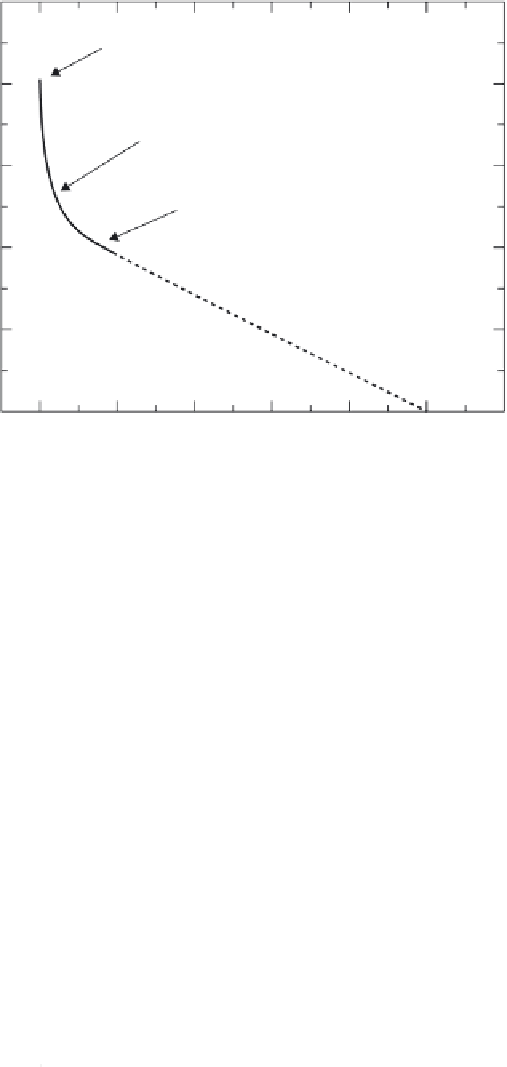Environmental Engineering Reference
In-Depth Information
0.020
Vacuum annealed
0.016
3.910
16
n/cm
2
0.012
10
17
n/cm
2
2.8
0.008
0.004
210
18
n/cm
2
0.000
0
4
8 12
10
-17
φ
t
(n/cm
2
)
16
20
24
1. 17
Effect of neutron irradiation on concentration of nitrogen
in solution in mild steel.
25
material, whereas increased strength and ductility are noted following irra-
diation to around 2
×
10
18
n/cm
2
; but, after irradiating at the highest fl uence
level of 1.4
10
19
n/cm
2
the ductility decreased to around 2% with possi-
ble fracture during Luders band propagation. These results are in contrast
to those at room temperature where no DSA or blue brittleness is noted
(Fig. 1.14b). At 100°C in mild steel where jerky fl ow started, the ductility
decreased to 11% while it increased to ~20% following neutron irradia-
tion to 10
18
n/cm
2
. The fact that strength increased along with an increase
in ductility implies that toughness (as defi ned by the area under the stress-
strain curve) increases at temperatures where DSA is suppressed following
radiation exposure. This is clearly shown in Fig. 1.20 which compares the
toughness (
J
) for mild steel before and after neutron irradiation to 2
×
10
18
n/cm
2
.
28
Normal radiation embrittlement is noted at ambient temperature
while an increase in toughness is observed at elevated temperatures follow-
ing radiation exposure. The measured toughness is sensitive to the strain-
rate of testing and a minimum toughness value is obtained when tested
over a strain-rate range. This minimum in the unirradiated material occurs
at higher temperatures for increased strain-rates and follows an Arrhenius
relation (
×
QR
/
/
T
T
where
T
c
is the temperature at which minimum tough-
ness occurs) with the activation energy (
Q
) identifi able with that for diffu-
sion of C and N in steel. Thus these synergistic effects of neutron irradiation
ε
=
Ae
−





Search WWH ::

Custom Search